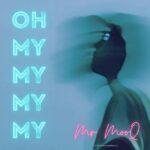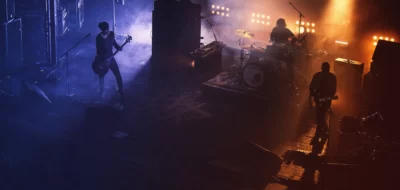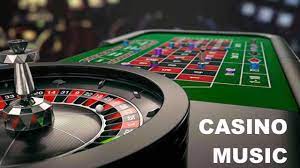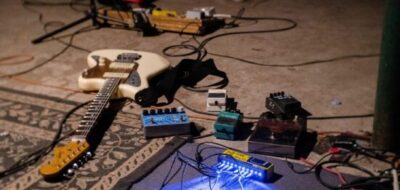The majority of school and college students spend quite a lengthy portion of their free and academic time on music streaming services like iTunes or Spotify. They will always play something that helps them to cheer up and overcome anxiety, which only speaks of the power of music. Yet, can music be implemented in the classroom curriculum and help one achieve learning objectives? The answer is a solid “yes” because it only takes creativity. One does not even have to introduce radical changes as technology will make things easier. The trick is to go beyond the basic music education that takes place in music schools and add more interaction and less strictness. Depending on the age of the learners, one can consider gamification or special talent show competitions to help everyone belong to something special and achieve a greater sense of confidence.
Integrating Music into the Classroom Curriculum
– Learning to Listen.
One of the primary tasks is to help students listen and learn how to appreciate information that’s not expressed in words. Unsurprisingly, they say that music continues where the words fail. It’s a reason why listening to music should be a part of every educational curriculum. Still, students should take notes as they listen. It’s a good way to work on reflective writing tasks. If it’s problematic, checking WritingUniverse can be helpful for writing and proofreading purposes. Remember that once you learn to listen, music will help you express your thoughts differently!
– Discussing Music Tastes.
Modern students like to engage in various discussions, yet the subjects at hand do not make them feel inspired. One of the ways to start a fruitful debate is to discuss music tastes by focusing on the artists and genres that one likes. You can start with debates and let every student come up with creative projects that will include multimedia elements, PowerPoint or YouTube presentations, written assignments, and more. It will help to make everyone engaged and stand for what they like and believe in.
– Music History and Musical Instruments.
Another helpful way to integrate music into an academic curriculum is to explore the musical history and the world’s musical instruments. It can be a bit problematic since some material will have to be in English or translated. Speaking of it, TranslationReport is a reliable service to consider for your translation needs. This way, you can provide your students with exclusive materials and let them appreciate musical instruments and history in a totally different way. Think about creating presentations or visiting the museum of musical instruments online or locally.
– School Bands and Competitions.
Don’t forget about the creation of school bands and hosting various competitions. There may be hidden talents in your class waiting to be discovered. When you are dealing with middle school students, it’s even possible to organize school choirs or use music as a way to enhance drama lessons. The college learners can consider a talent competition where everyone can showcase their talents, from DJing to helping with the makeup and decorations. When students feel inspired and work together, it makes it possible to create a great community spirit and make learning fun.
– Learning Sound Design and Composition.
Another way to add music to the learning process is to focus on sound engineering and the basic aspects of composition. It can be helpful for engineers and those students who are majoring in Healthcare or Psychology, as the appreciation of music is an important point. You should also check helpful apps for music college and learn how they can assist students as you explain various concepts. Regardless of your primary subject, it can make things interactive and inspiring.
Music and Special Education
This post would be incomplete if one failed to mention the importance of music in the classroom curriculum that is aimed at students with special needs. The talk here is about ADHD learners and autistic children who may not perceive complex textbooks and verbal instructions but will be able to express themselves through listening to music and playing stringed or key instruments. It’s one of the reasons why Waldorf schools are so successful among those youngsters who are creative beyond belief yet not able to showcase their skills in public. Music is the greatest power that helps students of all ages feel safe and find a special haven where they can learn and develop at their own pace. Adding music to the school curriculum is a time-consuming and challenging process, yet it’s always worth it!
BIO
Joanne Elliot never misses an opportunity to play some music as she explores and writes. She believes that music helps to unfold creativity and teaches compassion and empathy. As an educator, she strives to make music education accessible and clear to students, parents, and teachers.










